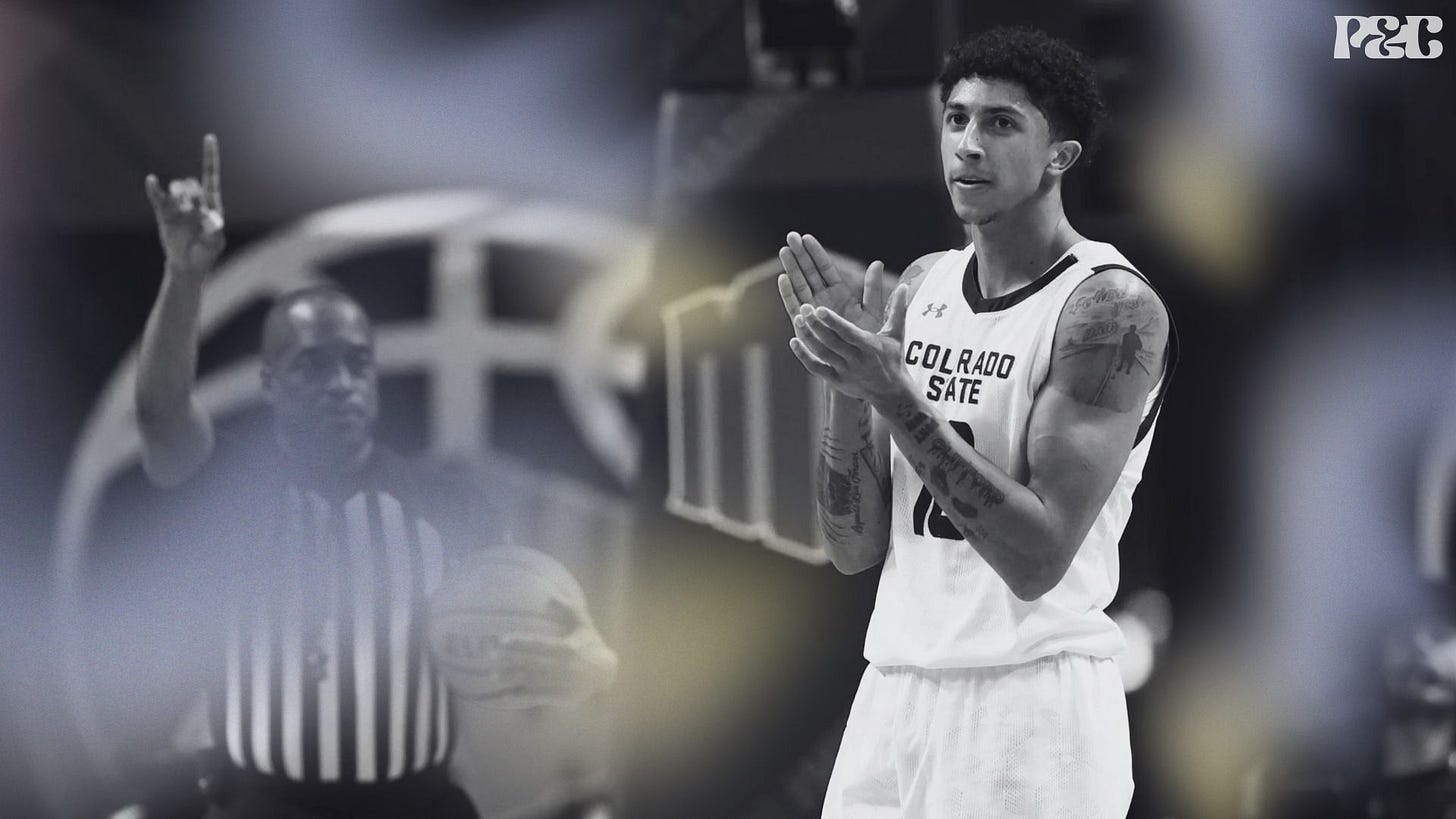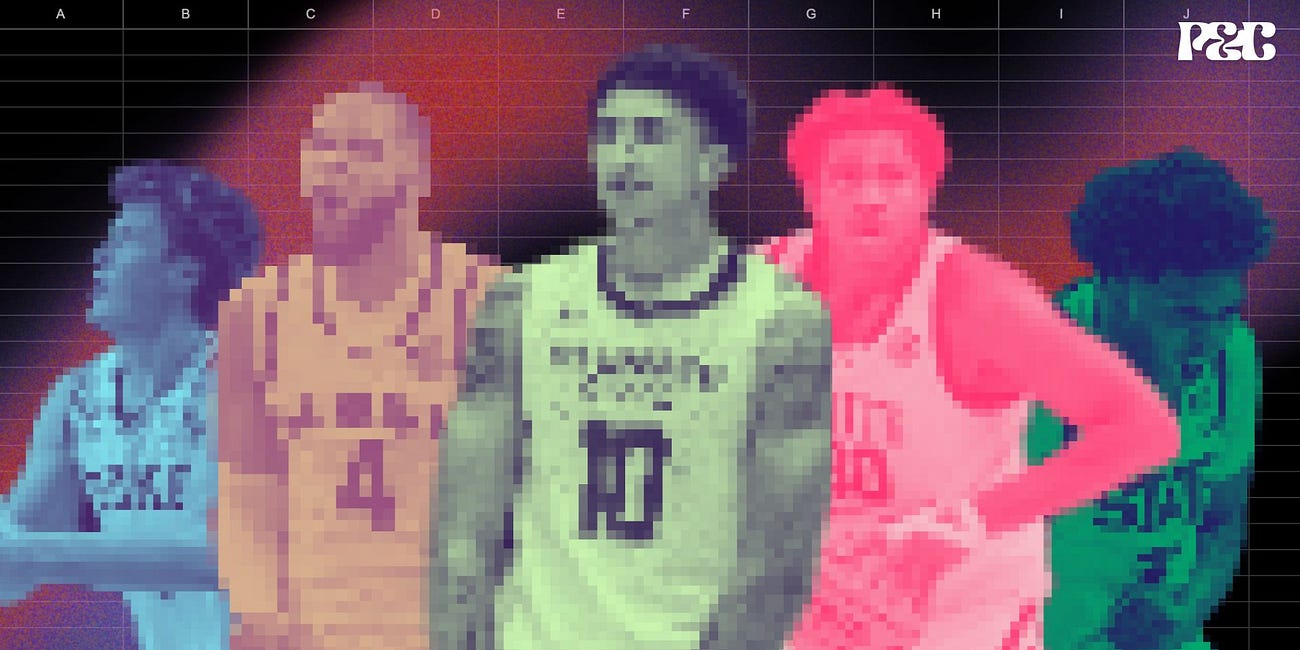Signal Calling: Pick-and-rolls make better wings
Sacramento's first-round pick, Nique Clifford, has been one of the best players in the Las Vegas Summer League, largely because of the on-ball reps he received in college.
Nique Clifford, the Kings’ 24th overall pick, has run just 20 pick-and-rolls in three Summer League games, marking just a 29.9% frequency rate. It’s a far cry from his fifth-year numbers at Colorado State, where Clifford was one of the most prolific and efficient pick-and-roll ball-handlers in the country, running 279 pick-and-rolls with 91st percentile efficiency (1.100 points per possession).
In the meantime, he’s been one of the best players in his first taste of NBA-esque competition, averaging 18.5 points, 6.5 rebounds, 4.8 assists, and 1.5 steals per game on a blisteringly hot 68.9% true shooting.
There’s a lesson to learn from this: pick-and-rolls make better wings.
Clifford’s story is one that’s been repeated again and again. Indiana Pacers guard Ben Sheppard played meaningful minutes in the NBA Finals after running 222 pick-and-rolls in his final season with Belmont. Cleveland Cavaliers wing Jaylon Tyson has also been dominating the Las Vegas Summer League after running 375 with California-Berkeley.
None of these players are stars — or have proven themselves to be stars — at this point in their careers. However, their commonality as older, late first-round picks who ran a high volume of pick-and-rolls has made them productive and valuable, outperforming their draft spot.
These players weren’t drafted to be stars. They were drafted for the immediate transition of their skill set to the highest level of play. In a lot of these cases, these players did most of their development in college. They improve at a steady rate in the NBA, but the big-time jump was made before that.
For Clifford, that jump came in the 2024 off-season. The 2023-24 season was his first in the Mountain West, and it was a successful one. Clifford averaged 12.2 points, 7.6 rebounds, and 3.0 assists. He made the MWC Third Team, playing second fiddle to first-team teammate Isaiah Stevens.
Then came 2024-25. Clifford earned the keys to an offense for the first time in five collegiate seasons and excelled. He made the MWC First Team and All-Defensive Team, leading the Rams to their second consecutive NCAA Tournament appearance, winning MWC Tournament MVP.
The run helped, but what secured Clifford a spot in the NBA Draft’s first round that coming June was his season’s worth of on-ball talent he displayed. Clifford’s usage in the pick-and-roll skyrocketed, as did his off-the-dribble shooting.
Proficiency on these attempts went up every season for Clifford, to the point where he was one of the nation’s clear-cut best dribble pull-up shooters. Prior to his fifth season, Clifford had never eclipsed the 50th percentile on dribble jumpers. This past year, he ranked in the 88th percentile.
In Summer League, he’s shown it wasn’t a fluke. Clifford’s taken 18 pull-up jumpers in his four games, going 3-of-8 from inside the arc and 5-of-10 from outside. It falls in line with another trend Clifford’s displayed in his ascension — the 2’s and 3’s are evening out. He’s a legitimate knockdown shooter at this point, and that’s evident in the pure aesthetics. Clifford makes shots like a star.
Another skill reaping the rewards of Clifford’s on-ball reps and shooting progression is his ability to make decisions off closeouts.
A lot of the same processing done in a pick-and-roll can be done when attacking a closeout. A defender going under a screen sends a player down the same pathway as a defender conceding space on a closeout. In the same vein, the offensive player processes help defense the same way it would the roll man’s defender.
Clifford has been excellent in these situations as well. Not only has he scored well over a point per possession on spot-ups, but he’s blended these closeout attacks well with the playmaking he’s developed with his collegiate on-ball usage.
Clifford’s 19 assists lead the Kings through Summer League, and it’s clear to see just how natural moving the rock comes to him after years playing a complimentary role. Without the scoring acumen of an offensive fixture, however, creating advantages in the process would not come near as natural for Clifford.
A quick attack off the catch like the one below keeps the defense off balance. Once Clifford beats the initial defender off the bounce, the other four defenders are left to desperately turn and rotate to try and avoid conceding an easy basket. Clifford gets deep and leaves the lowest of the four in a two-on-one.
Adversely, he can just read for space, rise and fire.
Here, Clifford catches, and faces a defender he has a speed advantage against. Because of this, the defender shades him towards the baseline, while conceding space. Clifford knows he can win with the shot, but against the longer defender, he jabs, shifts the ball into an atypical shooting pocket to feign comfort, and fires nonetheless — a credit to his near 40% mark on catch-and-shoot shots last year.
Final 2025 NBA Draft Big Board
It’s been a turbulent cycle, but one that has taught scouts a great deal about how the NBA Draft will work moving forward. An older, tighter group of prospects is a direct result of the changing landscape of college basketball, and what the NBA will inevitably do to combat this is yet to be seen.
Clifford wouldn’t be the player he is without the on-ball repetitions he earned throughout a prolonged collegiate career.
It’s a philosophical point I share among wings, especially older wings with projected off-ball roles. Simply knowing what to do as a primary handler lends itself well to quick decision-making off the ball. Clifford has spent times in both roles, and looks to be a complete off-ball wing at the least, and a legitimate star at the most.
The league is still catching up to this point. The illusion of potential is too often tied to age rather than actual skillset, which is why a player like Drake Powell, the Brooklyn Nets’ 22nd overall pick in the 2025 NBA draft — who ran just 14 pick-and-rolls with North Carolina — was taken over Clifford. The simple advantage is that Powell is nearly four years younger than Clifford.
I’m still undetermined on the true value of age in regards to potential. There is clear value when comparing two players of similar production — nobody is touching Clifford over Cooper Flagg — but when relying on age to make up a significant gap, it gets iffy.
Regardless, Clifford displays all the traits of a long-term value at the wing spot, and it’s for no small reason because of his tiem spent on the ball.




